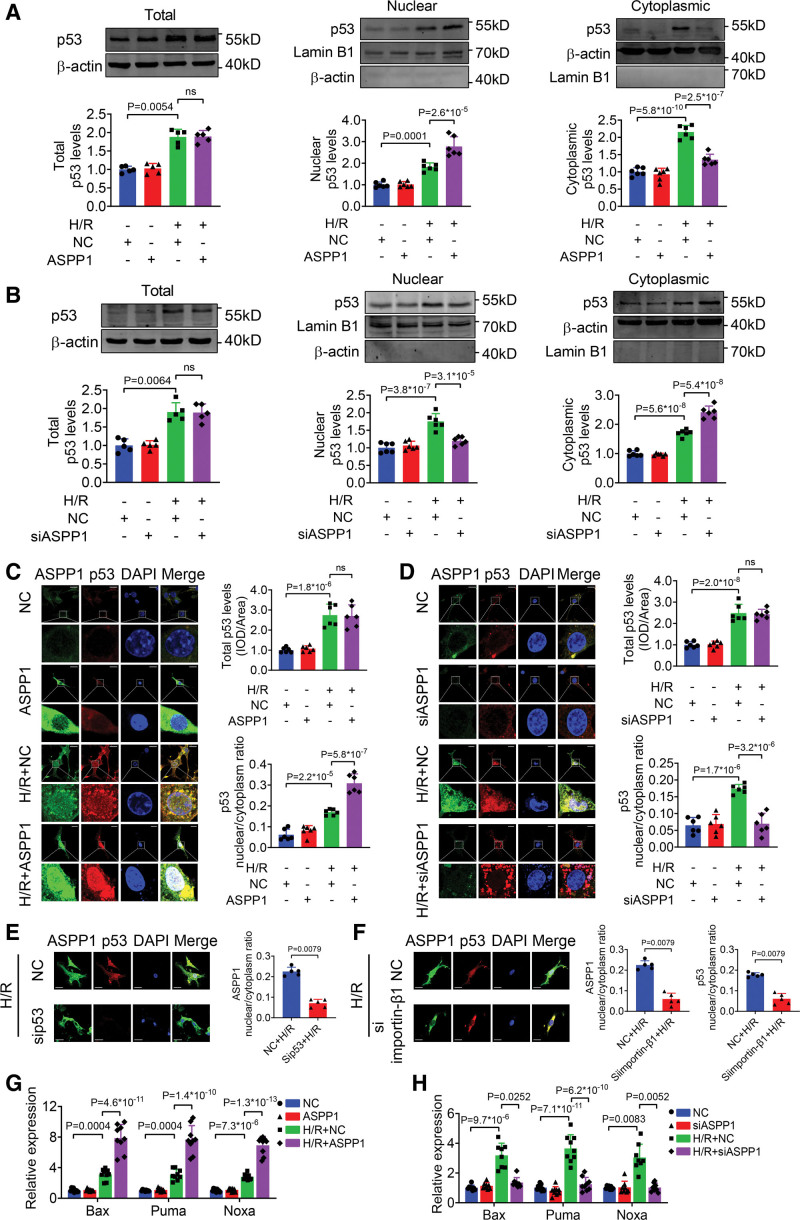Figure 2.
The nuclear translocation of ASPP1 and p53 are interdependent. A and B, Effects of ASPP1 overexpression or knockdown on the total protein level and nuclear distribution of p53 in neonatal mouse ventricular cardiomyocytes (NMVCs) by Western blot; n=5 for total p53 level (Kruskal-Wallis, followed by false discovery rate [FDR] method of Benjamini and Hochberg test); n=6 for nuclear and cytoplasmic p53 levels (1-way ANOVA, followed by Tukey post hoc multicomparisons test); ns, not significant. C and D, Immunofluorescent staining was performed to analyze the effects of ASPP1 overexpression or knockdown on p53 nuclear translocation in NMVCs (1-way ANOVA, followed by Tukey post hoc multicomparisons test); n=6; ns, not significant. Scale bar=20 μm. E, Effects of p53 knockdown on ASPP1 nuclear translocation in NMVCs (Mann-Whitney U test); n=5. Scale bar=20 μm. F, Effects of importin-β1 knockdown on ASPP1 and p53 nuclear translocation in NMVCs (Mann-Whitney U test); n=5. Scale bar=20 μm. G and H, Effects of ASPP1 overexpression (G) on mRNA levels of Bax (n=9), PUMA (n=9), and Noxa (n=9) or ASPP1 knockdown (H) on mRNA levels of Bax (n=8), PUMA (n=9), and Noxa (n=8) by quantitative real-time PCR (qRT-PCR, 1-way ANOVA, followed by Tukey post hoc multicomparisons test). ASPP1 indicates apoptosis stimulating of p53 protein 1; Bax, Bcl2-associated X; DAPI, 4′,6-diamidino-2-phenylindole; H/R, hypoxia/reoxygenation; and PUMA, p53 upregulated modulator of apoptosis.

